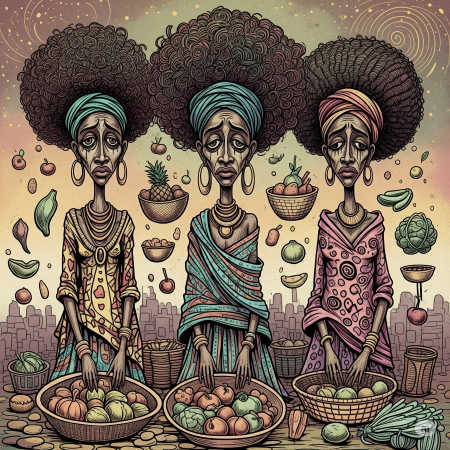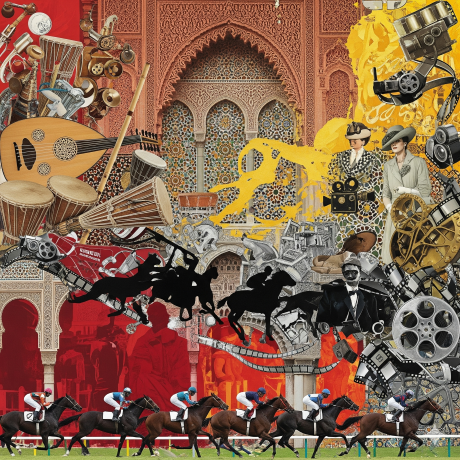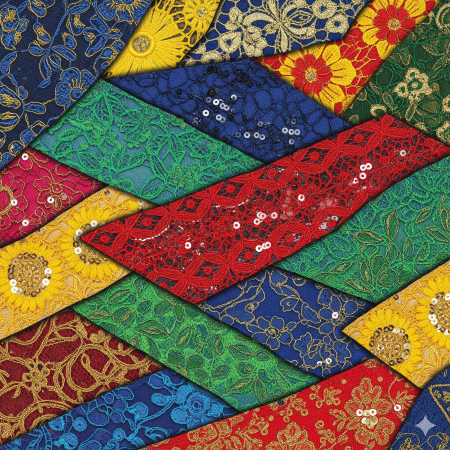Opinion: The Erasure of The Poor Working Class Wife in Africa

Just How Many Of Us Are Poor And Married?
Most adults in Nigeria are married or in a relationship, around 60% to 65%, especially in rural areas where marriage is common and families tend to be larger.
Poverty in Nigeria is especially severe in rural areas, where approximately 75% of the population lives below the poverty line—meaning they lack enough income to meet basic needs like food, shelter, and healthcare. While, around 41% of people living in urban areas face poverty.
This obviously means that a large number of poor men are married or living with women who share their struggles.
Yet, despite this reality, many men don’t fully recognize their wives as individuals with their own hardships and worth.
This disconnect fuels narratives that blame women as “gold diggers” or suggest women don’t truly struggle, ignoring the fact that these women are the very ones standing beside their husbands through poverty, hardship, and everyday survival.
Why Men Call Women Gold Diggers
Image Credit: Pulitzer Center
So, if the majority of Nigerians are poor, and these poor men are married to women who endure just as much, if not more, why are these women often erased or dismissed in the stories men tell about struggle and suffering.
The truth is, many of these men cannot afford the fantasies they have about women who fit the current beauty standards—the idealized image of the perfect woman that wealth is supposed to buy.
Because of this, their frustration often leads them to label all women as “gold diggers,” dehumanizing their very own wives in the process. If the woman they are married to doesn’t match that fantasy, she isn’t really “a wife” —so what else could she be, an evil spirit, a nag, a pseudo-man?
We’ve heard countless stories of men who, once their money improves, decide to begin extra-marital affairs. Suddenly, the very women they once devalued for not fitting that ideal are sidelined, while these men seek out new partners who fit their fantasies of beauty, demureness, femininity, and status.
This cycle reveals not only the impact of poverty on relationships but also how deeply social expectations and material wealth shape how men treat the women in their lives.
My Wife Just Eats My Money: The SubSaharan African Story
Across much of Africa, women are the quiet engine of household survival—often the primary breadwinners, even if they’re not officially recognized as such. Whether through small-scale farming, petty trading in markets, teaching in under-resourced schools, or hustling in the vast informal sector, many women shoulder the economic weight of their families every day.
In countless homes, it’s the woman’s income that feeds the children, pays school fees, and keeps the household afloat, even when men are present. Yet, this reality remains largely unstudied and under-acknowledged—not because the evidence isn’t there, but because we’ve become so comfortable existing in a financial matriarchy wrapped in the illusion of patriarchy, where the labor of women sustains communities, but rarely earns public attention, policy focus, or deep academic inquiry.
It’s often said that “the comfort zone is a beautiful place, but nothing ever grows there.” And as Peter Drucker wisely put it, “The greatest danger in times of turbulence is not the turbulence—it is to act with yesterday’s logic.” Together, these truths remind us that complacency can be as dangerous as chaos—because when we cling to familiar ways of thinking in unfamiliar times, we risk ignoring the very changes that demand our attention the most.
So tell me, why wouldn’t poverty or mass inequality continue in Africa, when the financial reality of the grassroot is silenced into oblivion?
The Myth of the Housewife: An European Story of Class, Struggle, and Survival
Image Credit: Yes Magazine
For much of recent history, society has clung to the image of the housewife: a woman in a tidy kitchen, apron on, a roast in the oven, and a smile on her face as her husband returns home from work.
It’s an image that shows up in old TV shows, textbooks, and family photo albums. But here’s the truth: that woman, that version of a wife, was never the norm. Real life is not Bridgerton
She was a product of privilege. Of money. Of a very narrow window in time and a very specific slice of society. For most women—especially working-class women, women of color, rural women, and immigrant women—life was not leisure and homemaking. It was labor. Constant, exhausting, unacknowledged labor.
This isn’t just a historical footnote. It’s a misunderstanding that has shaped how we talk about women’s roles, their work, and their worth for generations.
The Ideal That Never Fit Most Women
Image Credit: Remedial History Project
The idea of the housewife really took hold during the Industrial Revolution, when men started working in factories and offices and women were expected to stay behind, turning the home into a kind of emotional safe haven. By the Victorian era, the concept was crystallized in the image of the "Angel in the House"—a woman who was gentle, pure, self-sacrificing, and happy to exist entirely for her husband and children.
But there was a catch: to be a housewife, your husband needed to make enough money to support the whole family. That immediately excluded the vast majority of women. If you were poor, if you were a widow, if you were an immigrant, if you were anything but wealthy or securely middle-class, you worked. You had to.
In fact, even in 1860—when the image of the stay-at-home wife was gaining steam—more than half of American women were working.
What Working Women Actually Did
Image Credit: Flickr
Long before factories, women were out in the fields planting crops, raising animals, brewing ale, spinning thread, selling food in the market, and gathering fuel or water. They worked alongside their husbands or children. In many cultures, women made up the majority of agricultural laborers.
Then came the Industrial Age. In textile mills and garment factories, women worked 12- to 14-hour days under brutal conditions. Children too. They worked in domestic service—as maids, cooks, nannies, laundresses—doing for wealthy families what they couldn’t afford to do for their own. And they worked without protection, rights, or dignity.
In Britain in the 19th century, over one-third of employed women were domestic servants. Most of them lived in someone else’s home, with little control over their time or bodies. They were often isolated, vulnerable to abuse, and paid next to nothing.
Even when women had jobs outside the home, they still carried the full weight of running their own households. This is often called the "double burden"—working a full shift and then coming home to clean, cook, care for children, tend to sick relatives, sew clothes, and stretch a meager budget until it screamed. There were no days off. No breaks. No social safety net. Just survival.
When Beauty Was Currency, and Bodies Were the Price
Image Credit: Glamour Magazine
For women without wealth, options were few. And often painful. In many cases, beauty was one of the only forms of currency a woman had. For some, marriage to a wealthier man—often older, sometimes cruel—was a way to escape poverty.
Others found themselves with even fewer choices. Prostitution, both forced and chosen under pressure, became one of the only ways some women could support themselves or their families. In Victorian London and 19th-century Paris, entire neighborhoods became red-light districts populated by women who had no other path to survival.
This wasn’t about desire or deviance. It was about hunger, housing, and helplessness. Some found temporary escape or security with a wealthy patron or client—but these arrangements were unstable and exploitative. For most, there was no upward mobility, only risk.
Even outside of sex work, sexuality was a currency women were expected to trade on. From courtesans to kept mistresses, to simply "marrying well," many women used the only tools they had to gain some sliver of comfort or control in a world stacked against them.
Invisible Labor, No Recognition
Image Credit: Media Bypass News
The labor women performed was (and often still is) invisible. It wasn’t considered “real” work because it wasn’t in an office or factory—or because it was expected.
Think of the single mother working night shifts and coming home to make breakfast before walking her kids to school.
The LAWMA officers, who are mostly women.
The head porter women of Ghana, carrying load on their head.
Or the farm wife up before dawn, feeding animals and then baking bread and sewing clothes.
Or the market vendor who keeps a ledger in her head while juggling debt, illness, and hungry children.
This is work. Skilled, critical, life-sustaining work. And for most of history, it went unpaid, unrecorded, and unrecognized.
Ownership? Not for Her.
The other part of the myth we never talk about is that even when women helped build wealth—whether in the fields or the home—they almost never owned it.
Under the legal doctrine of coverture, a married woman’s identity was swallowed by her husband’s. She couldn’t own property, sign contracts, or even keep her own wages.
Even into the late 1800s, this was the law in much of Europe and America. And while legal reforms came slowly, the culture didn’t change overnight.
In many countries, including India, women are still far less likely to inherit land, despite laws saying otherwise.
They worked the land but rarely owned it. They earned money but couldn’t control it. Even in households where women managed every penny, they often did so without any legal or economic power.
The Legacy We Inherit
The image of the contented housewife has always been more fantasy than fact. It was crafted by people with power, for people with privilege. The rest of women—most women, were out working, scraping, surviving.
They raised families in tenements and shacks. They wore out their bodies in mills and kitchens. They lived with little safety, little rest, and almost no recognition.
We owe them more than erasure. We owe them memory, respect, and truth.
Let’s Tell the Whole Story
History has always been more complicated than the stories we’ve told. It’s time to write working women back in. To honor the ones who never had the luxury of domestic bliss. The ones who made do. Who made life happen.
The truth is, the "housewife" was never every woman’s story. But every woman, rich or poor, free or unfree—has a story worth telling.
You may also like...
Arsenal Legend Thierry Henry to Receive Prestigious BBC Lifetime Achievement Award

Former Arsenal and France football legend Thierry Henry will be honored with the Lifetime Achievement award at the 2025 ...
Maresca's Emotional Rollercoaster: Chelsea Boss Claims 'Happy' After 'Worst 48 Hours'

Chelsea boss Enzo Maresca has clarified his previous 'worst 48 hours' comments, now expressing happiness and a deeper co...
Fallout Season 2 Shatters Records, Outperforming HBO's Last of Us!

Fallout Season 2 has premiered on Prime Video to overwhelmingly positive critical and audience reception, scoring a near...
Winter Is Back! Kit Harington Hints at Massive Game of Thrones Comeback

Kit Harington has definitively shut down any possibility of reprising his role as Jon Snow, stating he doesn't want to g...
Love Blossoms: Anwuli & Kennedy's Instagram Romance Leads to #HappilyEverOffor!

Anwuli and Kennedy's love story, sparked by an Instagram connection, led to a beautiful Igbo traditional wedding. After ...
Teyana Taylor & Lucien Laviscount Light Up the 'Spirit Tunnel' with Epic Dance Moves!

The Jennifer Hudson Show features high-energy 'Spirit Tunnel' entrances, with Lucien Laviscount making a stylish walk an...
Kenya's Billion-Shilling Travel Bill: Austerity Pledge Broken?

The Kenyan government spent nearly Sh5 billion on travel in the first three months of FY 2025/26, raising concerns about...
Shehu Sani Urges Nigerians: Shun US Travel Ban, Build Nation

The United States has enacted new travel restrictions impacting Nigerian nationals, covering both immigrant and several ...
.png&w=1920&q=75)






